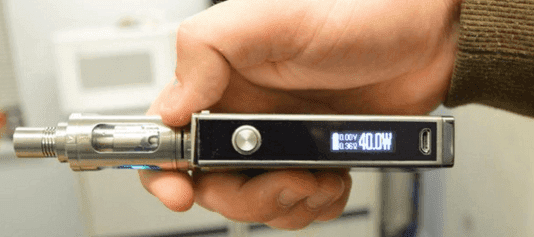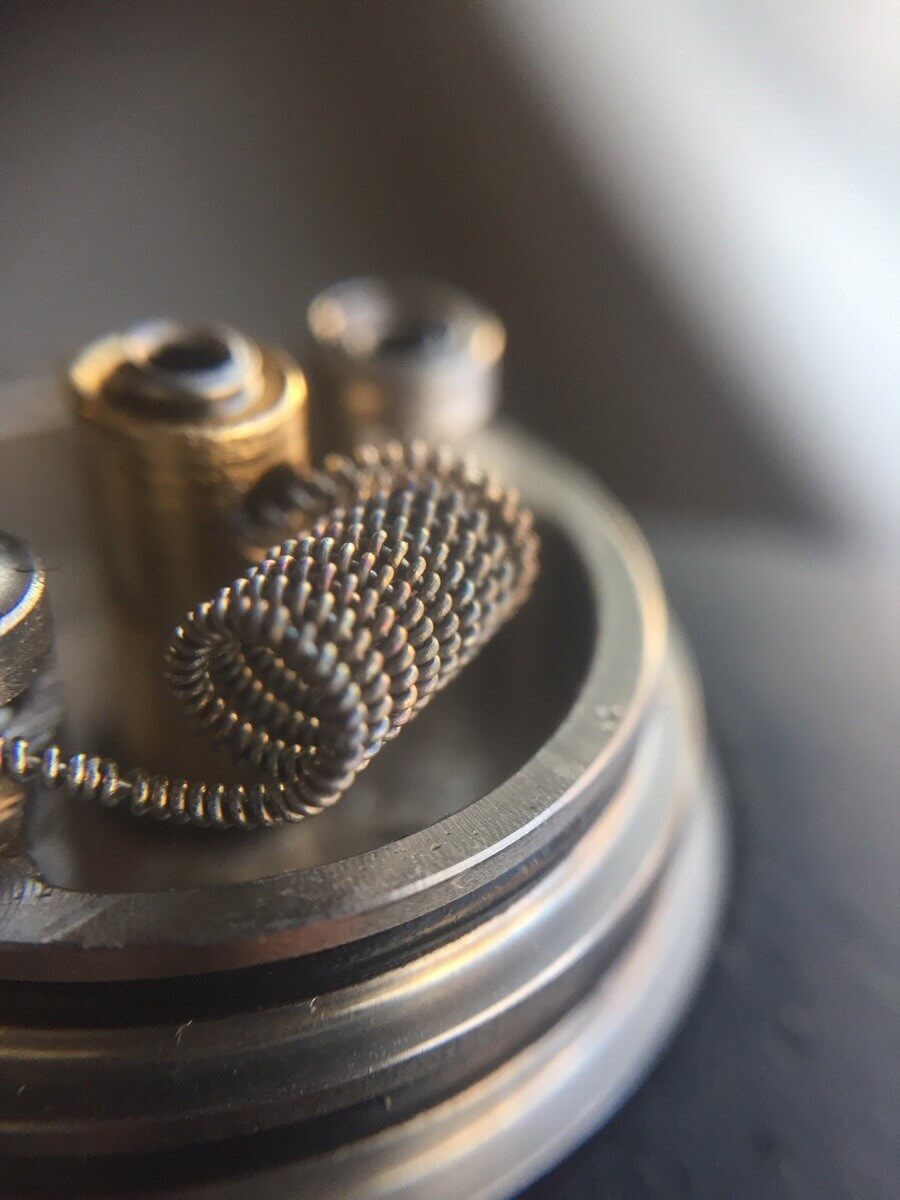Temperature control (TC) is the biggest revolution vaping has seen in the past few years, but not everyone is sure that taking the step up to TC mods will be worthwhile. Does performance really improve that much with TC, or is it a technological advance that doesn’t add much to the basic vaping experience? How does Temperature Control Vaping work? And do you need specific tanks or coils to vape with TC?
This post will provide the answers to these questions, along with a basic introduction to TC devices, the benefits of using one and everything you need to know to work out if it’s right for you.
Why Would You Need TC? Dry Puffs and Formaldehyde
Most vapers have experienced a “dry puff.” This happens when you try to vape, but there isn’t enough liquid in your tank, or the liquid in your wick is being vaporized faster than it can be replenished. Your coil is still producing heat, but without enough liquid to vaporize (and keep the temperature down in the process), the remaining juice ends up overheating. This is much like overcooking food: the result is a very unpleasant taste and the production of harmful chemicals.
 Specifically, studies have shown that during dry puff conditions, the propylene glycol (PG) in e-liquid degrades and produces formaldehyde. The most well-known study showing this is the New England Journal of Medicine study, which was widely reported as showing that e-cigarettes contain more formaldehyde than conventional cigarettes.
Specifically, studies have shown that during dry puff conditions, the propylene glycol (PG) in e-liquid degrades and produces formaldehyde. The most well-known study showing this is the New England Journal of Medicine study, which was widely reported as showing that e-cigarettes contain more formaldehyde than conventional cigarettes.
However, the combination of the power setting and atomizer used would produce dry puffs, and so the results aren’t relevant to normal vaping conditions. A subsequent study showed that the spike in formaldehyde levels occurs when real vapers identify dry puffs and would simply stop vaping and lower their setting.
For both reducing exposure to formaldehyde and more generally for eliminating dry puffs, temperature control is the ideal solution. When there isn’t enough liquid in the wick, hitting the “fire” button leads to a huge increase in temperature, but by putting a cap on that increase, the unpleasant taste and other negative consequences can be removed.
In short, the core reason for Temperature Control Vaping is that dry puffs no longer occur, even when you’re vaping from a tank very low on e-liquid.
How Temperature Control Vaping Works
So how do devices go about controlling the temperature you’re vaping at? While it would be theoretically possible to just include a temperature probe in the atomizer, a useful bit of physics means that this isn’t necessary. Temperature Control Vaping devices measure the temperature indirectly, based on what happens to the resistance of a material when you increase the temperature.

A little understanding of what resistance is helps you see how TC devices work. The current (i.e. the amps) flowing through your coil is really the motion of negatively-charged electrons from the negative post to the positive post, spurred on by the metaphorical “push” given to them by your battery.
The only thing that stops them is the positively-charged nuclei of the atoms, which they can “bump into” on their way through the material, creating a resistance to the flow of current. The nuclei wobble a little in their positions, and they wobble more at higher temperatures. This means that there is more resistance to the current (i.e. more chance of a collision) at high temperatures, even for the same material.
Temperature Control Vaping devices detect the small changes in resistance as the temperature increases, allowing them to infer the temperature without actually measuring it directly. For vapers, this means that temperature control vaping is possible without making huge changes to the design of existing atomizers and 510 connections. When the temperature of the coil reaches the setting you’ve dialed in, the device stops firing and lets the coil cool down before continuing.
This means that an important factor in producing a vape at a consistent temperature is how frequently the device checks the resistance of the coil, with modern devices performing 100 or even 1000 checks per second.
Which Coil Materials Work with Temperature Control Vaping?
 The way that the resistance changes at different temperatures depends on the material, though, so Temperature Control Vaping devices need to be properly calibrated to suit the coil material you’ll be using. Most vapers use kanthal coils, but the resistance of kanthal doesn’t change much when the temperature increases, making it hard to get TC working with. That’s why you don’t find kanthal-supporting TC devices. Nichrome generally isn’t supported on TC mods either, although the new Kbox 120 and 200 W devices have actually accomplished temperature control with nichrome wire.
The way that the resistance changes at different temperatures depends on the material, though, so Temperature Control Vaping devices need to be properly calibrated to suit the coil material you’ll be using. Most vapers use kanthal coils, but the resistance of kanthal doesn’t change much when the temperature increases, making it hard to get TC working with. That’s why you don’t find kanthal-supporting TC devices. Nichrome generally isn’t supported on TC mods either, although the new Kbox 120 and 200 W devices have actually accomplished temperature control with nichrome wire.
The most common material for TC coils is Ni200, which is a very pure nickel, meaning that its resistance changes fairly reliably (and noticeably) when the temperature is increased. Other materials that work with TC mods (although not all of them) are titanium and stainless steel. These aren’t all that convenient for people who build their own coils (nickel, for instance, is a very soft, springy metal that’s hard to work with), but many sub-ohm tanks have pre-made coils in one or more of these materials that allow temperature control vaping.
The Benefits of Temperature Control
As we covered earlier, the main benefit of Temperature Control Vaping is the removal of dry hits; addressing any concerns vapers or smokers may have about formaldehyde and meaning you can vape a tank right to the end without unpleasant puffs. You can even fire a coil with no liquid in the wick without doing damage to the wick. As a result, TC vaping generally maximizes the lifespan of your coil.
There are many other benefits to temperature control, too. The biggest of these is the level of control it gives you over the taste of your juice. While variable voltage and variable wattage devices let you dial in your preferred setting pretty closely, the most important factor when you’re vaporizing anything is temperature. A specific flavoring might be vaporized more efficiently at 430 °F than at 390 °F, for example, meaning that you wouldn’t pick it up as much if you vaped at a lower temperature. This means that TC can help you get a more consistent flavor from your juice.
Temperature control also limits how much your device fires, which has benefits for both the lifespan of your battery and your e-liquid consumption. Whereas VV/VW vaping would produce some spikes in temperature – which would be accompanied by more juice being vaporized – TC controls these and therefore helps a tank of juice last you longer. The improvement in battery lifespan goes alongside this: simply put, some of the time your finger is on the fire button, the battery will be getting a little break.
Choosing a Temperature Control E-Cigarette
While temperature control mods were once very expensive, the situation is very different today. The iStick TC40W is a perfect example of an affordable Temperature Control Vaping device, offering TC with nickel coils for under $30. However, there are plenty of options for TC mods on the market, and others cover more wire types and offer more control over parameters. Here are some things to look out for:
- Temperature range: Most Temperature Control Vaping devices allow you to set the temperature anywhere between 200 and 600 °F, which is more than suitable for most vapers. However, some devices may not offer such a wide range of possible settings.
- Choice of wattage: Although the temperature is the thing you’re controlling, the wattage the device operates at dictates how quickly you reach that temperature. Many devices let you choose the wattage the device fires at in TC mode, and these are preferable, offering more fine control over your vaping experience.
- Wire types covered: Most TC coils are nickel, but if a device supports titanium or stainless steel as well, this is a bonus.
- Resistance locking: Some temperature control devices allow you to “lock” in your resistance, which is a way of firmly establishing the baseline “cold” reading which everything is measured against. This isn’t always needed, though; in most cases you don’t run into problems without it.
- Frequency of resistance checks: The more times the device checks the resistance of your coil per second, the more accurate and consistent your TC will be. However, you do still usually get a good vape on devices that don’t perform excessive numbers of checks per second, so this isn’t a huge deal.
As always, it also helps to check out reviews of the device you’re considering, which should give you an idea of the specific limitations and benefits of the mod.
Conclusion – TC Vaping is Here to Stay
It’s true that Temperature Control Vaping isn’t necessary. The problems with dry puffs have been around since vaping first got started, but vapers have managed to avoid them by choosing suitable power settings for a given atomizer and developing an intuitive sense of when your juice level is getting too low (whether in a tank or after dripping). It’s really not an issue you have to deal with on a day-to-day basis, so you don’t absolutely need TC.
That said, the benefits of TC are significant and the downsides are really quite minor. For rebuilders, the switch to a material other than kanthal might not be ideal, and some may miss the characteristic punch of an unimpeded draw on a high-power mod, but for tank-loving vapers or just-switching smokers looking for a simple, consistent vape, TC has a hell of a lot to offer. It’s definitely a trend that’s here to stay.
Resources:
MistHub: Tutorial: Guide to Temperature Control Vaping
Ashtray Blog: Temperature Control Vaping: Everything You Need to Know
E-Cig Click: Beginners Guide To Temperature Control





